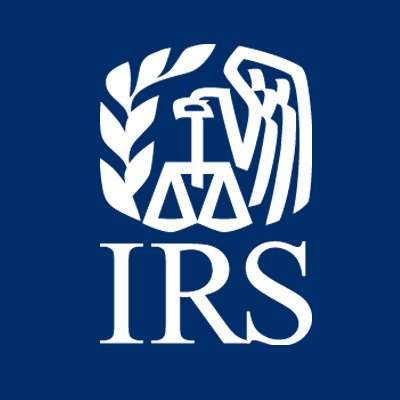
IRS: Never mind the myths; find filing season facts at IRS.gov
With the April 18 deadline quickly approaching, the Internal Revenue Service wants to debunk common myths with facts about filing taxes, finding refund information and adjusting withholding.
The IRS has a solid tax season underway as the agency continues to process 2022 tax returns and deliver refunds, with nine out of 10 refunds issued in less than 21 days. As of March 31, the IRS sent out almost 63 million refunds worth over $183 billion. This year’s average refund so far is $2,910.
Filing myths and facts
Myth: Taxpayers don’t need to report income if they didn’t receive a Form 1099-K this year.
Fact: All income must be reported unless it's excluded by law. This is true whether or not taxpayers receive a Form 1099-K, or other reporting forms. It is important to report all income to avoid receiving a notice or a bill from the IRS. This includes income from:
- Goods created and sold on online platforms.
- Investment income.
- Part-time or seasonal work.
- Self-employment or other business activities.
- Services provided through mobile apps.
Money received as a gift or for reimbursement does not require a Form 1099-K. Taxpayers can minimize the chance of receiving one of these forms in error by asking friends or family members to correctly designate those types of electronic payments as a non-business-related transaction when possible. Taxpayers can learn more at Form 1099-K Frequently Asked Questions.
The IRS will continue to share information about changes to 1099-K reporting for tax year 2023 that will be in effect for the 2024 tax season.
Myth: If a taxpayer requests an extension, they don’t need to do anything until Oct. 16.
Fact: It’s important to remember that an extension to file is not an extension to pay any tax due. Tax balances are still due on April 18. Taxpayers who request a six-month extension to file their taxes have until Oct. 16, 2023, to file their 2022 federal income tax return. If a taxpayer requests an extension, the IRS encourages them to file their income tax return when they’re ready instead of waiting until the Oct. 16 extension deadline.
Any taxpayer, regardless of income, can request an extension to file using IRS Free File at IRS.gov.
If taxpayers are in an area impacted by a FEMA declared disaster, they should check Tax Relief in Disaster Situations to get the latest updates on any postponed deadlines.
Refund myths and facts
Myth: Calling or visiting the IRS in person is the best way to speed up a refund.
Fact: The quickest and best way to check the status of a refund is through the “Where’s My Refund?” tool at IRS.gov or via the IRS2Go mobile app. Although some taxpayers mistakenly believe speaking with the IRS by phone or visiting in-person at an IRS Taxpayer Assistance Center will speed up their tax refund, “Where’s My Refund?” has the most up to date information available about a refund. Those taxpayers with limited internet access can reach “Where’s My Refund?” by calling the automated refund line at 800-829-1954. Taxpayers should call the IRS tax help line (800-829-1040) about refund status only if “Where's My Refund?” says to do so.
Fact: The IRS generally issues most refunds in less than 21 days, but it is possible a refund may take longer for various reasons, including if a return is incomplete or needs additional review. This delay could also be caused by transposed numbers or when a tax return is affected by identity theft or fraud. The IRS encourages taxpayers to use the “Where's My Refund?” tool to check the status of a refund daily. The system generally only updates data once a day – usually overnight.
There are different factors that could cause a tax refund to be smaller or larger than expected. Sometimes it is due to Child Tax Credit amounts, delinquent taxes or past due child support. The IRS will mail taxpayers a letter that explains if these adjustments have been made. The Department of Treasury’s Bureau of the Fiscal Service has more information on potential reduced refunds.
Taxpayers should only call the IRS tax help line to talk to a representative if it has been more than 21 days since their tax return was e-filed, or more than six weeks since mailing their return.
Myth: Tax transcripts are a secret way to get a refund deposit date.
Fact: Ordering a tax transcript will not help taxpayers understand the timing of their tax refund, nor will it speed up refund processing. Transcripts are designed to help verify past income and tax filing status for various loan applications and to help with tax preparation. The “Where’s My Refund?” tool remains the fastest and most accurate way to check refund status.
Withholding myth and facts
Myth: Taxpayers don’t need to adjust withholding for 2023 if a refund was received this year.
Fact: Taxpayers should frequently check withholding and adjust accordingly. For taxpayers who receive a paycheck from an employer, withholding is the amount of federal income tax withheld from the paycheck. Adjusting tax withholding with an employer is easy and using the Tax Withholding Estimator tool on IRS.gov can help taxpayers determine if they’re withholding the right amount.
Taxpayers should also check withholding when there’s a change in jobs, income or other life events like marriage or divorce, childbirth, an adoption or home purchase.
The IRS encourages taxpayers to always find the most accurate and up to date information at IRS.gov.
To avoid other common misconceptions about taxes, the IRS also reminds taxpayers to visit the Dirty Dozen tax scams for 2023.